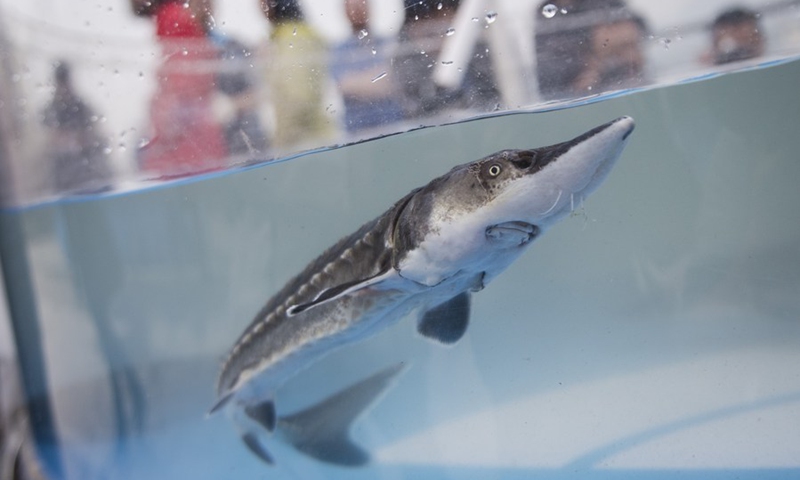China has not detected the natural reproduction of Chinese sturgeon for five consecutive years since 2017, according to media reports. Experts made the remarks on a forum held on Monday, the second Chinese Sturgeon Protection Day in China.
The monitoring results in 2021 showed that no signs of natural reproduction of Chinese sturgeon was detected in the lower reaches of Gezhouba Dam, said Wei Qiwei, researcher from the Yangtze River Fisheries Research Institute of the Chinese Academy of Fishery Sciences, The Paper reported on Monday.
The only Chinese sturgeon farm is located in the lower reaches of the Gezhouba Dam in Yichang, Central China’s Hubei Province.
Nicknamed “aquatic pandas,” the Chinese sturgeon is a species under the first-level protection in China. The wild Chinese sturgeon faces extinction, Wei said, noting that what we need to do is improve the conditions for spawning grounds, according to the report.
Since 1981, the reproduction of Chinese sturgeon in the Yangtze River declined rapidly. In the past five years, less than 30 Chinese sturgeons migrated. In 2021, the number of Chinese sturgeons bred in a farm in the lower reaches of Gezhouba Dam was only 15, two more than in 2020, according to the report.
Feng Guangpeng, another researcher from the East China Sea Fisheries Research Institute of the Chinese Academy of Fishery Sciences, said that it is important to establish natural reserves, enhance on-site protection and ban the commercial and scientific fishing of Chinese sturgeon, according to the report.
The wild Chinese sturgeon has basically lost its ability to sustain itself in addition to problems that need to be fixed and improved, such as scattered and weak scientific staff and the lack of a support mechanism, Feng said.
File photo shows Chinese sturgeon about to be released to the Yangtze River in Yichang, Central China’s Hubei Province. Photo: Xinhua




